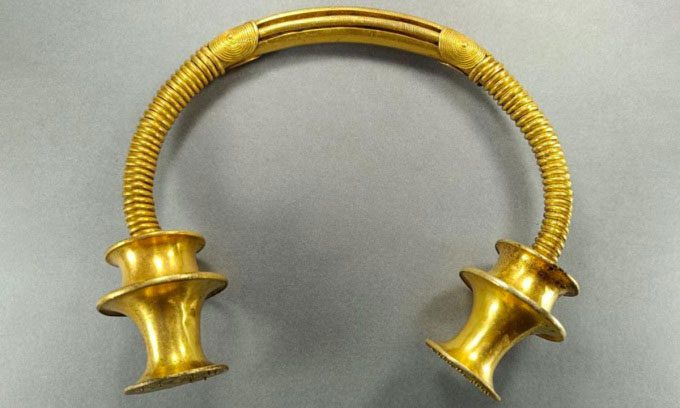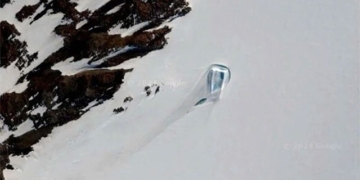A Newly Discovered Necklace in Cavandi Belonged to the Elite, Crafted by a Skilled Iron Age Artisan.
Sergio Marciandi, a worker for a local water company, accidentally discovered two gold necklaces among the rocks while working in Cavandi, Asturias, in northwest Spain, as reported by CNN on September 13. He quickly contacted Pablo Arias, a professor of prehistoric archaeology at the University of Cantabria.

The gold necklace reveals many insights about the Iron Age. (Photo: Archaeological Museum of Asturias).
Arias, along with experts from the Archaeological Museum of Asturias, visited Cavandi to conduct an investigation, during which they discovered a second necklace. However, it was broken into several pieces. He stated that the necklaces are truly impressive and could help scientists understand more about the Iron Age (which lasted from approximately the 5th to the 2nd century BCE).
Although some gold necklaces from the Iron Age have been discovered before, most were found in the 18th or 19th centuries when archaeological techniques were limited. Consequently, a significant amount of information regarding their origins has been lost, according to Arias.
In this case, the archaeological site remains intact, providing scientists with better information about the context of the necklaces. “We obtained very precise information about the location they were found. This is quite special,” Arias shared.
The two necklaces show signs of wear at the points of contact with the skin and clothing of the wearer, indicating they were used. Such necklaces are typically associated with the elite. “Not everyone can afford to buy a necklace like this,” Arias explained.
“Both necklaces embody all the ancient techniques of an extraordinarily skilled goldsmith: casting, intricate engraving, bead-making, soldering, combined with aesthetic and geometric patterns,” Ángel Villa, an expert at the Archaeological Museum of Asturias, remarked.
Dating the jewelry is challenging, but Arias believes they are no more than 2,500 years old. The local government stated that this remarkable discovery is extraordinary considering the quality and skill of the artisan, and it opens a doorway for research into one of the most characteristic types of gold jewelry from the Iron Age.


















































